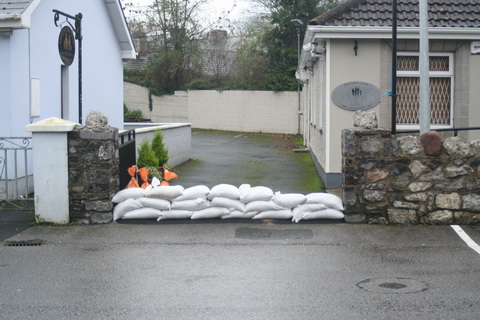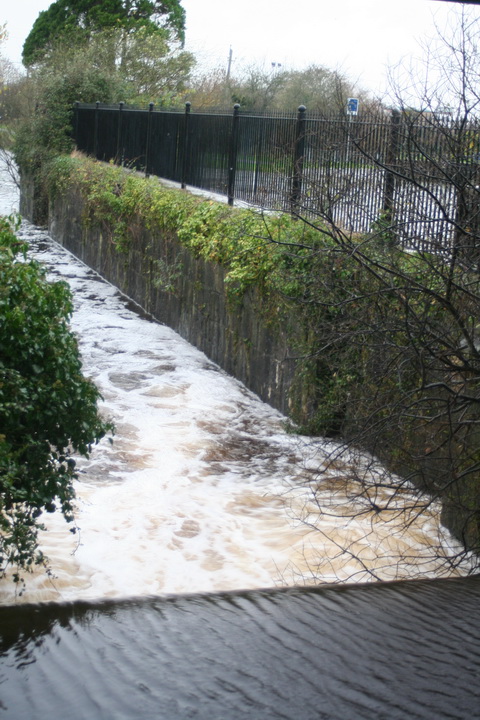I have been known to complain about the absence [on the interweb] of information about the state of the Shannon downstream of Banagher and Meelick.
Waterways Ireland
On the Waterways Ireland website, on the “About Us” menu, there’s a “Water Levels” option which takes you to this OTT Hydromet page. Perhaps my security settings are too high (or too eccentric), but at the top of the page all I see is
Alternate HTML content should be placed here. This content requires the Adobe Flash Player. Get Flash
At the bottom I read
Click here to obtain list of todays 9am Values. Please Note – Levels are recorded in meters to MSL Malin Head.
There is also a disclaimer.
The link goes to this page where the locations of various gauges are categorised by waterway. The furthest south [on the Shannon] I can find is …
Meelick Weir Gauge SS_MEELICK Water level 0001 32.62m 2018-07-07 07:30:00 5400
… from which I deduce that the water level at Meelick Weir is 32.62 metres above mean sea level at Malin Head. From that, of course, I can deduce the depth of the water at Meelick, or I could if I knew how far the bed of the river was above MSL Malin Head, and by charting the daily returns I could see whether the level was increasing or decreasing.
OPW
Alternatively, I could use the OPW’s gauge at Banagher, only a little way upstream, which shows me the depth, the change over 35 days and the level in relation to various percentiles of previous levels. That is a lot easier to read and a lot more useful: although a measure of flow would be more useful still, I can assume that a high level will be accompanied by a faster flow.
ESB
I have recently discovered that the ESB has a page with (admittedly for a small number of sites) information in a more user-friendly format than either WI or the OPW. To find it from the home page, select “Our Businesses”, then “Generation & Energy Trading”, then “Hydrometric Information”, then “River Shannon”, then “Beware of the leopard”. Alternatively, try www.esbhydro.ie/shannon for a list of PDFs.
Either way, the files available include
- a hydrometric forecast for the Shannon
- one-year charts showing levels at each of five locations: Bellantra sluices, Lough Ree; Thatch, Lough Ree; Athlone Weir downstream; Portumna Bridge; Pier Head, Killaloe
- even more useful for anyone going near Killaloe Bridge, the total flow [in cubic metres per second] at Parteen Villa Weir and at Ardnacrusha.
Here, in flagrant breach of the ESB’s copyright, is the chart for Parteen Villa Weir:
The flow has been pretty well flat, at 0, for some time. The Parteen and Ardnacrusha charts have accompanying tables giving the figures for the last 30 days; here are those for Ardnacrusha:
Each of Ardnacrusha’s four turbines uses about 100 cubic metres per second [cumec]. The flow through Parteen Villa Weir is divided between the old course of the Shannon [which must get 10 cumec] and the new channel through Ardnacrusha. The combined flow through Parteen has been 11 cumec for the past week, and Ardnacrusha has been getting nothing (except a tiny amount on 3 July). That explains why the level of water at Castleconnell, on the old course, is slightly higher than normal summer levels (11 rather than 10 cumec).
And with no water going through Ardnacrusha, the level of Lough Derg is normal (see the chart for Killaloe) and there is no strong current at Killaloe.
Note, by the way, that the levels shown by the ESB are referenced to the older Poolbeg ordnance datum, not the Malin Head used since 1970: “Poolbeg OD was about 2.7 metres lower than Malin OD.”
Other sites?
If, Gentle Reader, you know of any other accessible web pages with user-friendly information on flows or depths on the waterways, do please leave a Comment below.



























